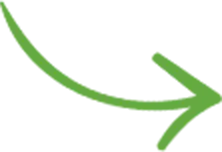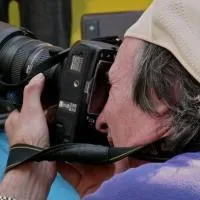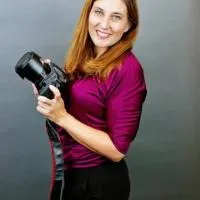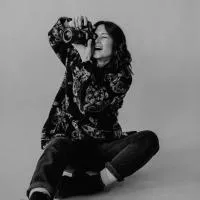Contents
The majority of people visiting your site are there for the first time. They haven’t seen your website before, and they came looking for something. And quickly.
It’s your responsibility to make the browsing experience as straightforward as possible, showing them your best work, and making it clear how and where they can learn more about you.
How to know your new vs. returning visitor stats?
Inside Google Analytics, head over to the Audience > Behavior > New vs Returning report. For most photography websites, the new visitors far outnumber the returning ones:

Please note that Analytics can’t always accurately differentiate a new from a returning user. If someone clears their browser cache or visits your site from a different device, he might still be counted a “new”.
You’ll probably notice that the majority of your visitors are first-timers and that matters a lot. Your website needs to be optimized to engage them, to eventually turn them into repeat visitors (and into clients).
What makes a first-time visitor different?
- Trust starts at zero (or even at a negative value, if they’re skeptical). They haven’t seen your work yet, they don’t know what you’re capable of.
- They’re unfamiliar with how your website is structured, so they can get confused easily.
- They probably have short attention spans.
- They have high expectations; they want to see if your site is worth their time and if they can get what they need from it.
First impressions matter
The first time someone comes on your website is a great “opportunity” to disappoint them (through confusing options, design clutter, poor performance, etc.)
“Humans are able to make extremely sophisticated judgments in a fraction of a second. And once they’ve drawn that conclusion, they resist changing it.” – Seth Godin – All marketers
are liarstell stories
It’s all about trust: users want to know they can trust you and that they can find what they’re looking for.
You can make them feel comfortable and confident through the tone in your headlines, the simplicity of your design, and, of course, the quality of your work.
Put yourself in their shoes (and why that’s very difficult)
It can be hard to design and structure your website because you’re very familiar with your own content. You’re too close to it. You’ve kept adding more and more “stuff” to your homepage in recent years, with many different things fighting for attention. Everything’s clear to you, because you know it well. But it might all be a mess to everyone else.
First-time visitors are sometimes expecting yet another BS website, another piece of noise in their busy lives. It’s your opportunity to actually impress them, to show them quality stuff.
And you can try to view your own site with fresh eyes. It’s an exercise of imagination: think of first-time visitors reaching your site, and ask yourself these questions:
- Would it be clear to them what the site is all about?
- What brought them to the site in the first place? What were they looking for?
- What’s something that would actually surprise them in a good way?
- What would be cliche to them?
- What do they already know about your type of work?
To help with this process, try Googling some other photographers in your niche and randomly opening their sites. And then just analyze your own first impressions (about the design in general, about the ease of navigation, about their choice of words, etc.)
And then think about your online presence: are you creating those same (good or bad) first impressions on your site?
Here’s a nice example to start with: Swirltography.com
The website includes an interesting slider, a well-written intro paragraph (succinctly explaining what the site is about and a mini-bio), followed by the main 4 big categories.
Get feedback from other people
Try as you might, you might still be too close to your own work to be able to judge it objectively.
That’s when you need some fresh pairs of eyes.
Ask some friends (or other photographers) to give you their impressions. Don’t lead them in any way, just keep the questions as open as possible.
Alternatively, you can install a free tool like Hotjar to get video recordings of visitors to your site. This can be really insightful, showing exactly how first-time visitors browse your site or where they get stuck.
The importance of the navigation menu
Most users, after quickly scanning the homepage, look to the navigation menu to decide where to browse next. It’s critical that the menu is not over-crowded and that it’s easy to understand (without any “clever” unfamiliar menu items).
Everything you need to know on this topic can be fine in my full guide: Navigation menu best‑practices for photography websites
Define your goals for the site and work backward
Step back and decide what you want people to do on your site. Is it to contact you? To purchase one of your stock images? To read your blog?
You might have started with different goals when you first launched the site, but priorities change over time. Does your site’s homepage reflect your new goals? It’s time to re-assess what you want to get out of your website.
Then think how you can organize and design your site to lead first-time visitors to take those actions.
For example, Patrick Endres decided to move personal projects over to his personal site, while keeping his Alaska stock photography site solely focused on selling images: AlaskaPhotoGraphics.com
That’s why the navigation menu has been trimmed down considerably, and why the homepage’s only job is to showcase his stock photography galleries. Not to mention the prominent search box in the header, and expanding categories-sidebar on the left, further helping visitors browse through the archive. The goals for the site are clear, and there are no distractions standing in their way.
Remove the clutter
Your first job is to simplify your website (especially the homepage) to only promote the important stuff. Don’t give users 10+ options from different photography specialties. Show them only the few ones that matter.
And don’t forget to focus more on humans than on SEO. Cramming too much content for search engines can backfire and scare away new visitors.
The actual design itself should, of course, be pleasing to the eyes, for which you might need to hire a professional web-designer. You’ll be surprised how much a website can be visually improved by doing CSS adjustments, by introducing more white-space between elements, and by properly aligning design elements on a page.
Make your copy sharp and straightforward
I hope you know that it’s important to include some text on your homepage (not necessarily for SEO purposes, but to make it clear to visitors what the site is all about).
How you write that copy is very important. But many photographers go for something overly-creative, using vague and meaningless words.
Don’t forget that first-time visitors are in a hurry to find what they’re looking for, they don’t have time to decipher any “mumbo-jumbo” text.
Paint a clear picture first, and only afterward go into finer and more abstract details.
Pay special attention to your homepage
Because that’s the first page that most users will see, it makes sense to focus on your site’s homepage.
A well-optimized homepage:
- makes it instantly clear what types of photography you do, where you’re from (if location is relevant to your business), and what actions they should take next
- prioritizes important stuff at the top
- contains (at least) a few sentences explaining who you are and what you do, but don’t put your whole bio in there, just a few sentences to get the message across. In fact, the homepage tagline (which usually sits above, inside or below the slideshow, if you have one) is the single most important element on your entire site. It needs to be clear and honest. Check out many good and bad tagline examples in this dedicated article: Homepage slideshows are dead – 4 better ways to design the top of your website front page
- does not oversell things. Selling doesn’t happen on their first visit, it can take place later, on other pages.
Make your photographer Bio page more engaging
There’s often a difference between what you want to write about yourself, and what visitors want to learn about you.
New visitors will commonly head over to the About page (which is often the second most visited page after the homepage) to get a better understanding of you and your photography work.
Use this guide to help craft a compelling About page in order to make you look trustworthy and to provide the essential information about your work: The complete guide to building your amazing photography “About” page
Use call to action buttons at the end of pages
Call to action buttons are especially effective for confused first-time visitors: use them to guide their actions across your site.
This guide explains everything you need to know on the topic: Using call-to-action buttons to guide people through your photography website
Further reading
- 20 quick tips to reduce your bounce rate and keep visitors on your site longer
- 5 Psychology Tips to Woo Your First Time Website Visitors
- The Number One Way to Reduce Your Website Bounce Rate
- How to Inspire Your First Time Blog Visitors to Trust You
- How to Turn First-Time Visitors into Valuable Customers
- 15 Quick Tips to Engage and Delight First-Time Web Visitors
- How To Retain First Time Visitors To Your Website
Conclusion
Simplifying your website should eventually improve the new visitors’ experience on your site.
Tracking the relevant metrics in Google Analytics (bounce rate, time on site, pages per visit – segmented for new subscribers only) should tell you how you’re doing.
If you don’t clarify your website for new visitors, you won’t get more return visitors either!















